
Thomas Shields Clarke (April 25, 1860 –November 15, 1920) was an American painter and sculptor. He is best known for his bronze sculpture The Cider Press , in San Francisco.

Thomas Shields Clarke (April 25, 1860 –November 15, 1920) was an American painter and sculptor. He is best known for his bronze sculpture The Cider Press , in San Francisco.
Named for his grandfather, he was born in Pittsburgh, Pennsylvania, the eldest of the six children of Charles John Clarke, a Pennsylvania Railroad executive, and Louisa Semple.
He was a cartoonist for a student newspaper at Princeton University, from which he graduated in 1882. He studied for a year at the Art Students League of New York, then worked as an illustrator in New York City. [1] He moved to Paris to study at the Académie Julian —painting under William-Adolphe Bouguereau and Jules Joseph Lefebvre; and sculpture under Henri Chapu. [1] He was admitted to the École des Beaux-Arts, where he studied in the atelier of Jean-Léon Gérôme. Clarke left the École after less than 3 years, and became the special pupil of Pascal Dagnan-Bouveret. [1]
Clarke exhibited his first painting at the Paris Salon of 1885, and had his first success with the wryly humorous A Fool's Fool, exhibited at the Salon of 1887. [1] The Night Market in Morocco, an exotic scene by firelight, earned him a diploma of honor at the 1891 International Art Exhibition of Berlin, and was exhibited at the Paris Salon of 1892. [1]
Clarke exhibited paintings at the 1893 World's Columbian Exposition in Chicago, Illinois—A Fool's Fool, The Night Market in Morocco, Portrait of Madame d' E, A Gondola Girl, and the full-size cartoon for a 3-part lunette stained glass window: Morning, Noon and Night. [lower-alpha 1] He was awarded a medal for his paintings. [3]

Clarke debuted a plaster sculpture group, The Cider Press, at the Paris Salon of 1892. [2] It depicts a muscular father pressing apples while his young son samples the juice. Clarke designed it to be a public drinking fountain, with water to flow out of the press and into a bucket at its base. [lower-alpha 2] The Cider Press was exhibited at the 1892 Historical American Exposition in Madrid, at which King Alfonso presented Clarke with a medal (the only one awarded to a foreign sculptor). [1] A larger-than-life-size bronze version was cast in Paris by Jaboeuf & Bezout Fondeurs, [5] and exhibited at the 1893 World's Fair. The following year, it was exhibited at the California Midwinter International Exposition of 1894, in San Francisco. The Exposition's Executive Committee purchased the sculpture and presented it to the city. [5] It was installed as a drinking fountain in Golden Gate Park in 1894. [5] Vandalism caused it to be relocated to the grounds of the De Young Museum.
Clarke modeled a set of four caryatides – Spring, Summer, Autumn, Winter – for the Madison Avenue façade of the Appellate Division Courthouse of New York State, in Manhattan. [6] He modeled a figure in staff of Captain Thomas Macdonough for the Dewey Arch, [7] a temporary structure erected in Madison Square, Manhattan, to celebrate Admiral George Dewey's 1898 victory in the Spanish–American War. Clarke modeled an ornate bell for the gunboat USS Princeton (active 1898–1919). [8] He modeled To Alma Mater (1900), a larger-than-life-size plaster sculpture group for his own alma mater, Princeton University, [9] but it seems never to have been executed in bronze or marble.
Clarke was elected an associate of the National Academy of Design in 1902. George M. Reevs painted his "diploma" portrait. [10] Clarke was a member of the National Sculpture Society, the National Arts Club, the Architectural League of New York and the Century Association. [10]
On October 3, 1886, Clarke married Adelaide Knox, the daughter of Theodore Hand Knox and Adelaide Susan Jenney, in Geneva, Switzerland. The couple had three children: daughters Alma Adelaide Clarke [11] and Beatrice Clarke Remington, and son Charles John Clarke, named for his grandfather and known as "Jack."
Clarke lived in Europe for 11 years, [9] and returned with his family to the United States in 1894. [10] He hired architect Wilson Eyre to design an Arts & Crafts-style summer house and studio, "Fernbrook," in Lenox, Massachusetts. [12] Completed in 1904, Clarke generally worked there from May to October.
Clarke's brothers, Louis, John and James, were pioneers in automobile production. Louis Semple Clarke patented the porcelain-insulated sparkplug.
The Pennsylvania Academy of the Fine Arts in Philadelphia owns "A Fool's Fool" (1887), and a collection of Clarke's sketches: PAFA also holds a collection of his correspondence and photographs:(PDF)

Frédéric Auguste Bartholdi was a French sculptor and painter. He is best known for designing Liberty Enlightening the World, commonly known as the Statue of Liberty.

George Grey Barnard, often written George Gray Barnard, was an American sculptor who trained in Paris. He is especially noted for his heroic sized Struggle of the Two Natures in Man at the Metropolitan Museum of Art, his twin sculpture groups at the Pennsylvania State Capitol, and his Lincoln statue in Cincinnati, Ohio. His major works are largely symbolical in character. His personal collection of medieval architectural fragments became a core part of The Cloisters in New York City.
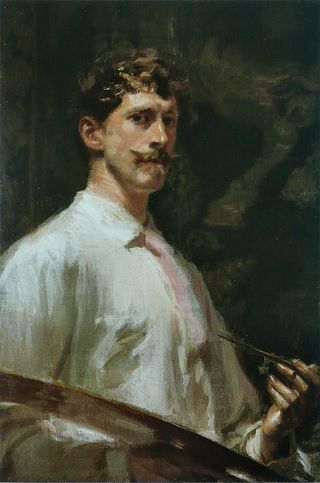
Frederick William MacMonnies was the best known expatriate American sculptor of the Beaux-Arts school, as successful and lauded in France as he was in the United States. He was also a highly accomplished painter and portraitist. He was born in Brooklyn Heights, Brooklyn, New York and died in New York City.

Karl Theodore Francis Bitter was an Austrian-born American sculptor best known for his architectural sculpture, memorials and residential work.
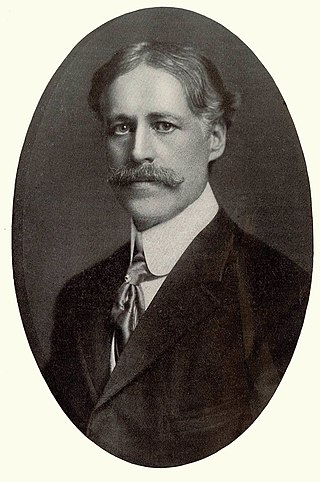
William Ordway Partridge was an American sculptor, teacher and author. Among his best-known works are the Shakespeare Monument in Chicago, the equestrian statue of General Grant in Brooklyn, the Pietà at St. Patrick's Cathedral in Manhattan, and the Pocahontas statue in Jamestown, Virginia.

Lorado Zadok Taft was an American sculptor, writer and educator. His 1903 book, The History of American Sculpture, was the first survey of the subject and stood for decades as the standard reference. He has been credited with helping to advance the status of women as sculptors.

Charles Allan Grafly, Jr. was an American sculptor, and teacher. Instructor of Sculpture at the Pennsylvania Academy of the Fine Arts for 37 years, his students included Paul Manship, Albin Polasek, and Walker Hancock.

Cyrus Edwin Dallin was an American sculptor best known for his depictions of Native Americans. He created more than 260 works, including the Equestrian Statue of Paul Revere in Boston; the Angel Moroni atop Salt Lake Temple in Salt Lake City; and Appeal to the Great Spirit (1908), at the Museum of Fine Arts, Boston. He was also an accomplished painter and an Olympic archer.

Enid Yandell was an American sculptor from Louisville, Kentucky who studied with Auguste Rodin in Paris, Philip Martiny in New York City, and Frederick William MacMonnies.
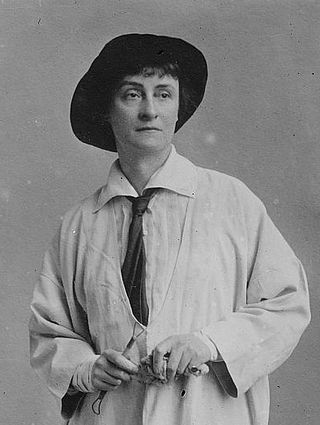
Janet Scudder, born Netta Deweze Frazee Scudder, was an American sculptor and painter from Terre Haute, Indiana, who is best known for her memorial sculptures, bas-relief portraiture, and portrait medallions, as well as her garden sculptures and fountains. Her first major commission was the design for the seal of the New York Bar Association around 1896. Scudder's Frog Fountain (1901) led to the series of sculptures and fountains for which she is best known. Later commissions included a Congressional Gold Medal honoring Domício da Gama and a commemorative medal for Indiana's centennial in 1916. Scudder also displayed her work at numerous national and international exhibitions in the United States and in Europe from the late 1890s to the late 1930s. Scudder's autobiography, Modeling My Life, was published in 1925.
Richard W. Bock was an American sculptor and associate of Frank Lloyd Wright.

Allen George Newman III was an American sculptor, best known for his statue "The Hiker".

Elizabeth Nourse was a realist-style genre, portrait, and landscape painter born in Mt. Healthy, Ohio, in the Cincinnati area. She also worked in decorative painting and sculpture. Described by her contemporaries as "the first woman painter of America" and "the dean of American woman painters in France and one of the most eminent contemporary artists of her sex," Nourse was the first American woman to be voted into the Société Nationale des Beaux-Arts. She also had the honor of having one of her paintings purchased by the French government and included in the Luxembourg Museum's permanent collection. Nourse's style was described by Los Angeles critic Henry J. Seldis as a "forerunner of social realist painting." Some of Nourse's works are displayed at the Cincinnati Art Museum.
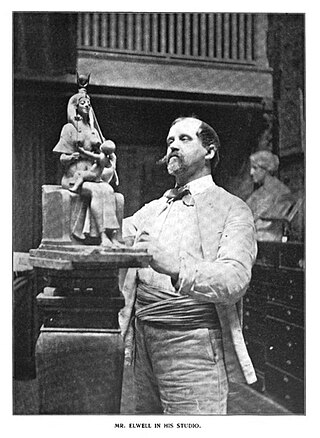
Francis Edwin Elwell was an American sculptor, teacher, and author.

Stephen Arnold Douglas Volk was an American portrait and figure painter, muralist, and educator. He taught at the Cooper Union, the Art Students League of New York, and was one of the founders of the Minneapolis School of Fine Arts. He and his wife Marion established a summer artist colony in western Maine.
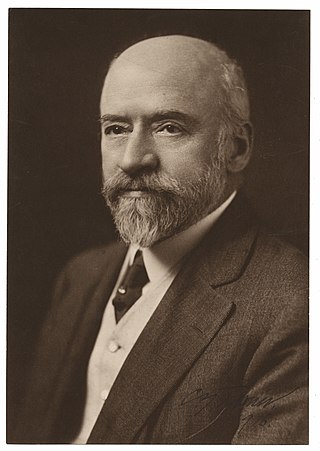
Charles Yardley "C. Y." Turner was an American painter, illustrator, muralist and teacher. His genre scenes and American historical paintings were popularized through engravings and book illustrations.

Walter Elmer Schofield was an American Impressionist landscape and marine painter. Although he never lived in New Hope or Bucks County, Schofield is regarded as one of the Pennsylvania Impressionists.